While LG’s 27GL850-B is still hard to get, it’s display panel is available for other brands to use in their design. Currently the Lenovo Legion Y27Q-20 and Viewsonic’s XG270QG are available for purchase. Let’s look at their key features.
| 27GL850-B | Y27Q-20 | XG270QG | |
| Adaptive Sync | Freesync/G-Sync compatible | Freesync/G-Sync compatible | G-Sync |
| Refresh | 144Hz | 165Hz | 165Hz |
| USB ports | 2 (back) | 3 (2 side, 1 bottom) | 3 (bottom) |
| Stand | Height, tilt, pivot Metal and plastic | Height, tilt, pivot, swivel Fully metal | Height, tilt, pivot, swivel |
| Other | Audio out VESA100 | Audio out/mic in VESA100 Headphone hook Low blue light mode | Audio out VESA100 Headphone hook, Low blue light mode Mouse cable hook RGB features Hood |
| MSRP | $499.99 | $549.99 | $675.99 |
It will be interesting to see if the G-Sync module in Viewsonic’s offering will make a difference to overdrive behaviour at lower framerates. Note that there is also a Y27GQ-20 ($629.99 MSRP) available which has a G-Sync module if that’s your requirement. This display does only come with an 8bit TN panel though.
Unboxing and features
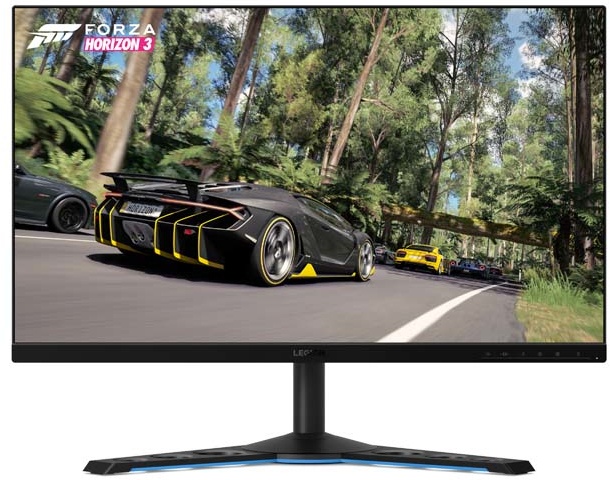
Unboxing the monitor is a nice experience, the monitor is packed in styrofoam and has a box with a handle and a lid that’s able to close again which makes transporting the monitor easier. In the box you’ll find:
- Displayport 1.4 cable
- HDMI 2.0 cable
- USB 3.1 type B upstream cable
- Power brick
- Power lead
- Documentation
The base of the stand and it’s upright will have to be assembled with an integrated screw, after this it’s possible to attach the panel to it’s base with some locking hooks. No tools are required. The base feels very heavy and strong, it’s all metal. The bottom plate is a thick piece of metal with holes in it and a blue underside which looks quite pleasing and unique.
The display itself is technically the same as in LG’s 27GL850. It features a 1440p resolution, 165Hz refresh rate at 10bits and internally processes this at 8bit+frc. It’s contrast ratio is stated at 1000:1 but given the performance of LG’s offering it’s expected to be around 850:1.
Mounting the display to a VESA100 arm went well but the cables attach to the monitor quite low at the back of the display. The connections are oriented vertically so when mounted to an arm, you will notice the USB upstream and DisplayPort cables exiting from the bottom. Getting some right-angle adapter should fix this if you’re after a clean setup.
First impressions and build quality
Turning on the monitor for the first time greets you with a Lenovo logo and a vibrant image due to it’s wide color gamut support. The interface is controlled by using the front buttons, there are six in total of which one is reserved for a power toggle. They feel nice and clicky. When the menu is closed, the five buttons will act as shortcuts to the following settings.
- Game settings (profiles, overdrive and on screen framerate)
- Input toggle
- On screen refresh rate options
- Birghtness and color settings
- Main osd menu
All pages can be accessed from all shortcuts by backing out of the current page. It would’ve been nice if the buttons could’ve been assigned custom functions. I personally do not enjoy the menu system all that much but after setting up the monitor you’re not likely to use it all that much. I only wish there would’ve been a way to quickly toggle sRGB mode. I do enjoy that the menu gives you an option to set a timeout so that it stays open for longer when adjusting settings.
There is one usb port on the underside and two on the left side of the monitor. There is also a 3.5mm audio jack on the left which can be used as a headphone TRS output as well as a TRRS headset connection providing a 24 bits at 48KHz microphone input. This input also seems to provide some form of echo cancelation. The input provides some decent quality.
Issues
An issue with the OSD I noticed is that it won’t show if your refresh rate is set to anything below 100Hz. I also prefer to have most of the USB ports on the back of the display. Having two on the back gives the option to plug in a keyboard and mouse which leaves one on the left free for charging a phone. Lenovo has chosen to have two on the left side and one on the back, not a huge deal at all but noteworthy.
Another minor issue is that the monitor, on NVIDIA at least, defaults to 8bits per channel even though it can do 10bits at 165Hz. Going into the NVIDIA control panel and setting the color settings to manual allows you to enable 10bpc. You’ll be hard pressed to see the difference though unless you like staring at gradients.
Picture quality
Out of the box
The monitor comes preset with Game mode set to Off, these modes are different profiles and all have their own character. Besides Off there are: FPS1/2, Racing, RTS and Game 1/2. All modes basically lock out every other setting in the monitor so leaving Game mode to Off will give most flexibility. The monitor offers controls for Brightness, DCR(dynamic contrast), Saturation, Contrast, Color Temp. and Dark Boost. It does however lack a mode to change gamma, so unless Lenovo decides to add this to a future firmware update you’ll be stuck with the default gamma. Let’s hope it’s set right then!
sRGB mode
Let’s first take a look at sRGB mode which should be factory calibrated, this mode locks out all settings except brightness.
| Whitepoint | 6423K |
| Contrast | 863:1 |
| Average dE | 0.88 |
| Maximum dE | 1.54 |
These results are pretty great, the monitor has no problems display sRGB content in this mode. The only slight problems here are a slight green tint in greyscales and slightly elevated gamma values near pure white. This means that highlights might get clipped slightly as seen in the last picture above which was taken with a camera.
It’s below average contrast ratio for an IPS display is expected with this panel and even though it’s a bummer, it’s very difficult to see the difference between this panel and an IPS panel that has a 1000:1 contrast ratio or higher.
Unclamped gamut
Comparing the uncalibrated display against DCI P3 and sRGB yields worse results. Setting the whitepoint required me to set the Color Temp. to RGB 100/97/100 since the default values gave a green hue, setting the display to it’s Normal white point setting also resulted in a better whitepoint.
Color performance compared to DCI P3 is actually pretty good but gamma performance falls short here.
Comparing the uncalibrated display to sRGB also shows a pretty poor result but this is to be expected when comparing an unclamped gamut to sRGB. The gamma respons is still pretty poor though. Let’s see how calibration can improve results then.
Post calibration
The monitor has been calibrated with an X-Rite i1Display Pro colorimeter using DisplayCAL software. DisplayCAL is using the “LG 27GL850 by 4KM for newDP (i1 Pro)” correction with an sRGB gamma target. Note that this is only the gamma response (luminance) and not clamping the color gamut.
Calibrating the display is pretty straightforward since there is not a lot you can and should adjust. sRGB mode is set to off, contrast is set to 85 and reducing brightness to around 20 will give around a 120cd/m2 brightness level. Measuring and profiling then gave the following results.
| Contrast | 840:1 |
| sRGB gamut | 99.8% |
| Adobe RGB gamut | 85.9% |
| DCI P3 gamut | 94.8% |
| Min brightness | 62cd/m2 |
| Max brightness | 380cd/m2 |
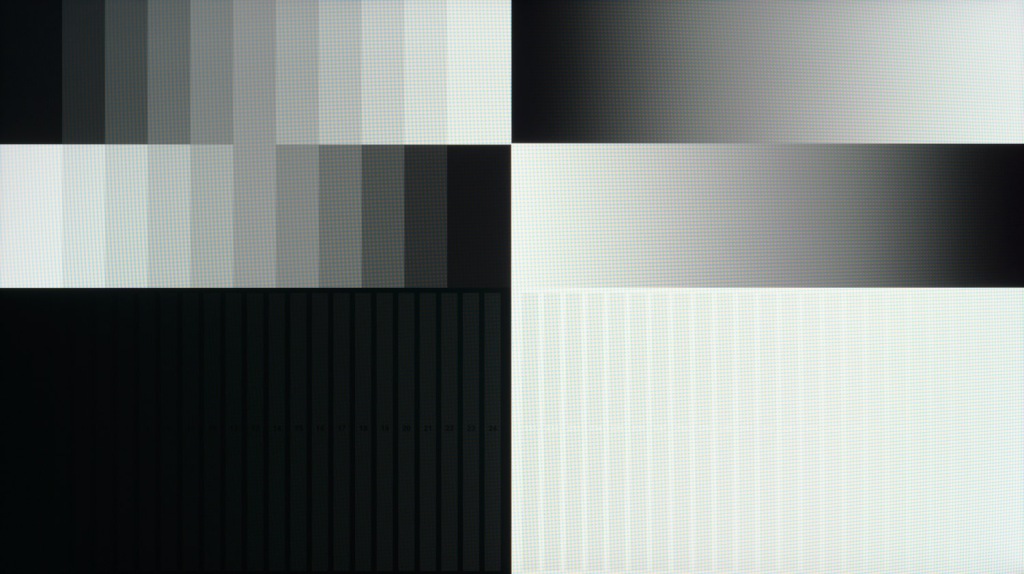
Uncalibrated greyscale 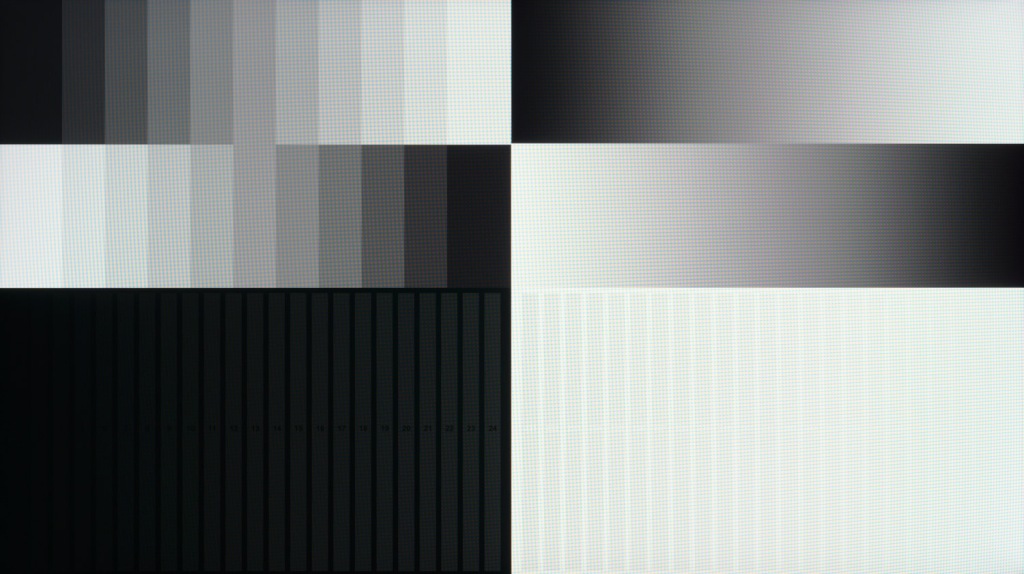
Calibrated greyscale
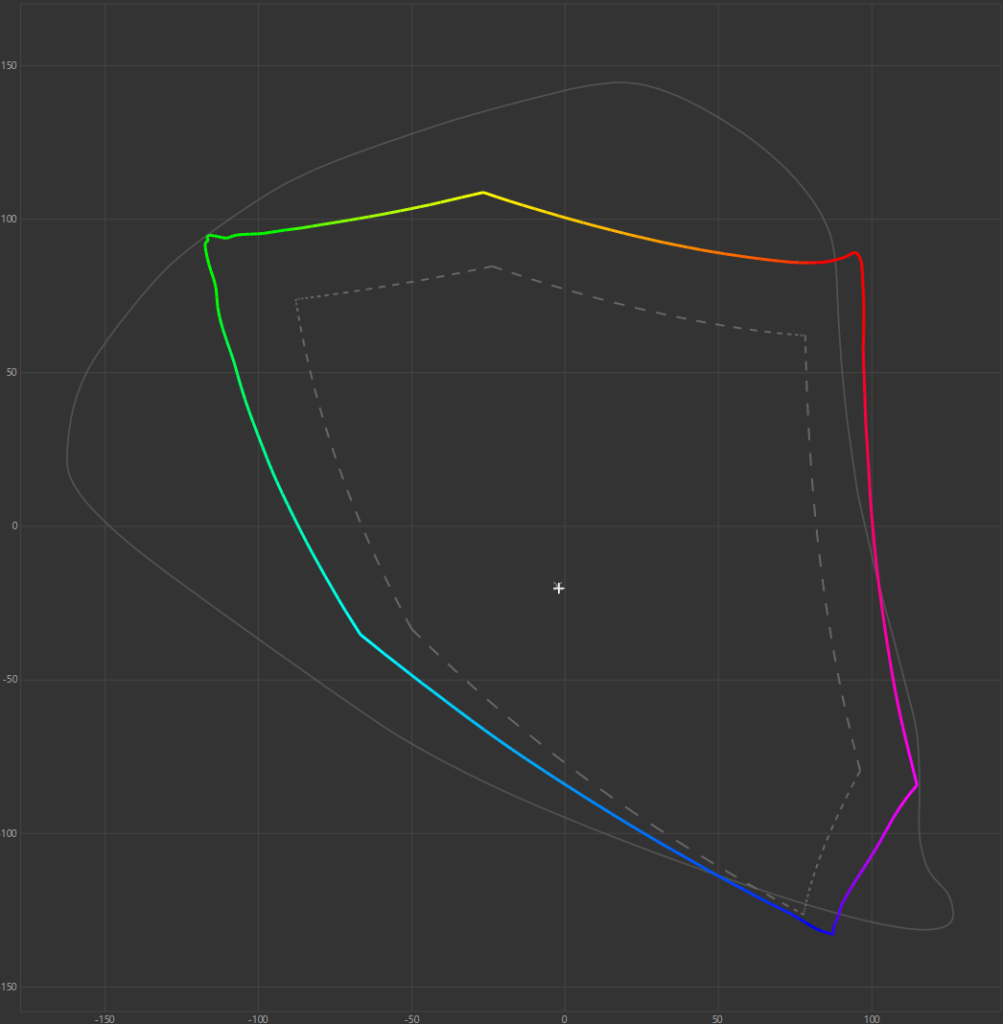
Display vs sRGB coverage 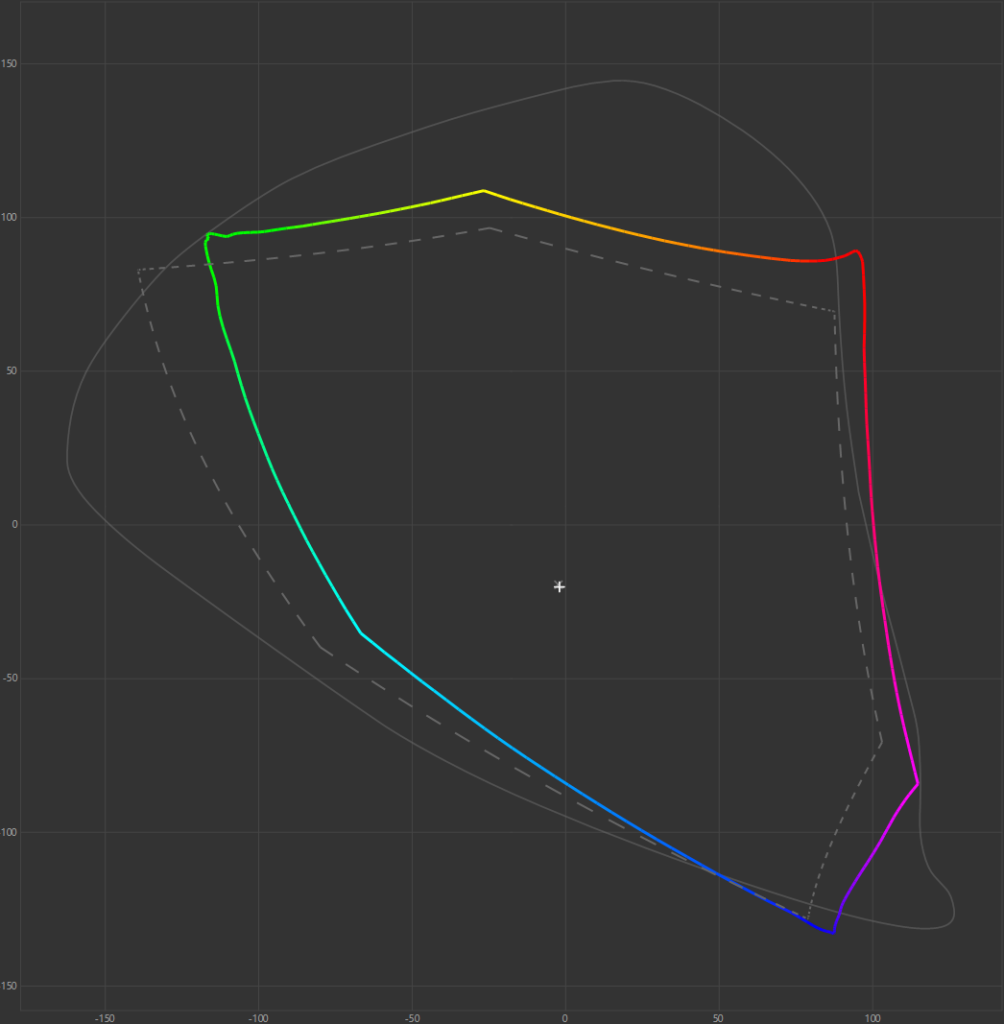
Display vs DCI P3 coverage 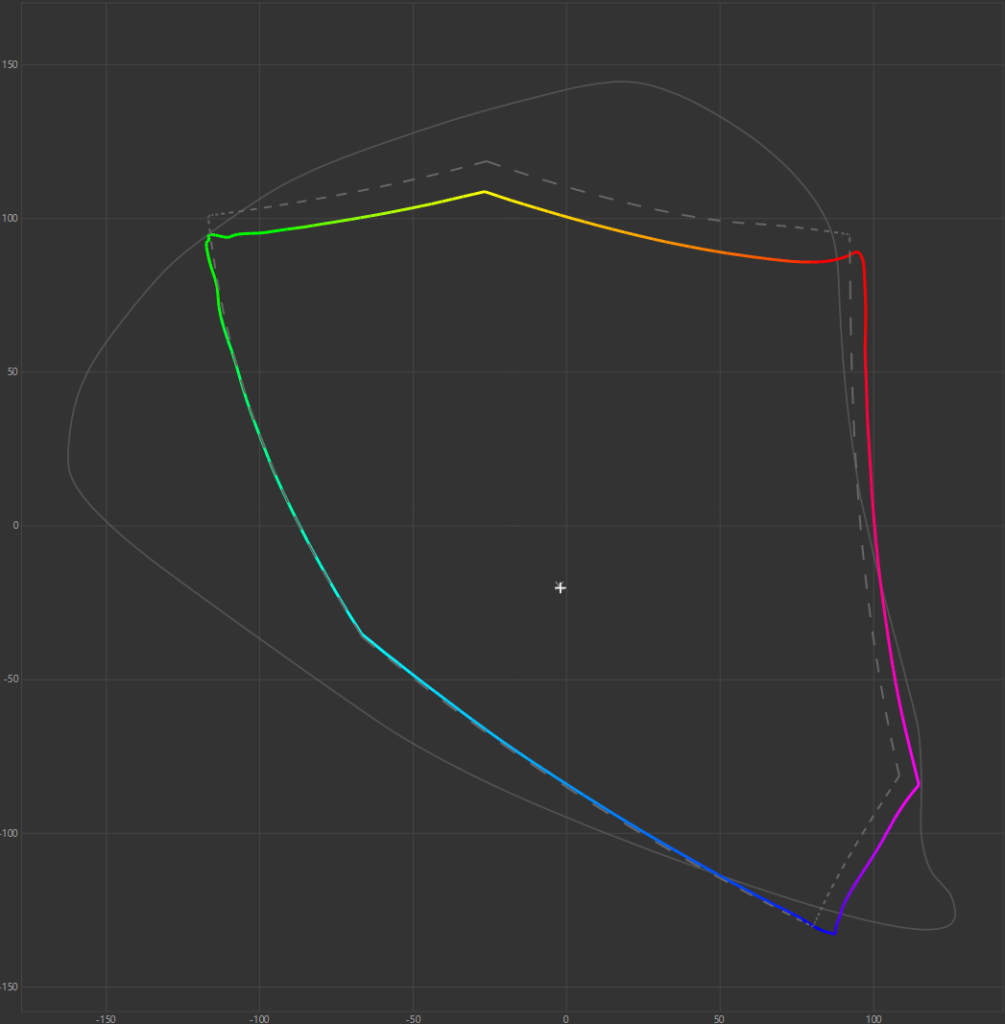
Display vs Adobe RGB coverage
The green tint in the greyscale response has been corrected. Comparing the color gamut to sRGB shows that it’s easily capable of covering the entire gamut. Looking at DCI P3 shows that it can cover most of it’s gamut but that it lacks some saturation towards green and cyan. Adobe RGB is also covered pretty well here with slight under saturation in the reds and greens which results in slightly under-saturated yellows.
Compared against other color spaces
Measuring this profile against several color spaces gives the folowing results. Note that Adobe RGB has several high dE spikes since the monitor is technically not able to display the full saturation targets of Adobe RGB.
| sRGB | DCI P3 D65 2.2 | Adobe RGB | |
| Average dE | 0.34 | 0.59 | 1.16 |
| Maximum dE | 1.12 | 1.4 | 5.35 |
Below are parts of the measurement report for sRGB, DCI-P3 and Adobe RGB verifications showing more detail.
These results are excellent and anyone who has access to a calibration device should have a great experience with this monitor while doing color-critical work.
Color profiles
Several people asked me if I would be willing to share my color profile so here they are. I should warn you that every display will have it’s own characteristics so my color profiles will probably not be 100% accurate for your display. I would recommend you to use DisplayCal to import and manage these profiles, this way you’re sure that the profile will always be applied. Simply unpack the supplied 7z archive, download and install DisplayCal, ignore ArgyllCMS installation and go to file, load settings and import the .icm file. Then click on install profile next to the drop down menu and set as system default. You can find my two profiles here. One is for sRGB emulation mode and the other is for wide gamut mode, R,G and B values are in the filename.
Display uniformity
My unit has a very uniform image with only the left side showing slight vignetting when looking at a uniform color.
Backlight bleed
Bleed can show if a panel isn’t mounted in it’s chassis well since pressure points on the panel will show through as dark spots or highlights. Lenovo has done an great job on my unit as hardly any glow is visible. When looking at a black screen at a 2s shutter speed (compared to 1/4th on the uniformity black image above, so overexposed by 3 stops), slight clouding can be seen with most of it visible at the bottom left and top right. In person though, I can only see the bottom left bleed on a black background. This result is better than both 27GL83A’s I’ve tested before.

Off-angle glow
IPS display all suffer from glow when you look at them from an angle. Below are two images where the first one shows a worst-case scenario (45 degrees up and to the side). This image shows a dark red/brown glow which is comparable to the 27GL83A I reviewed earlier. Looking at the display from a 45 degree angle to the side shows very little glow.
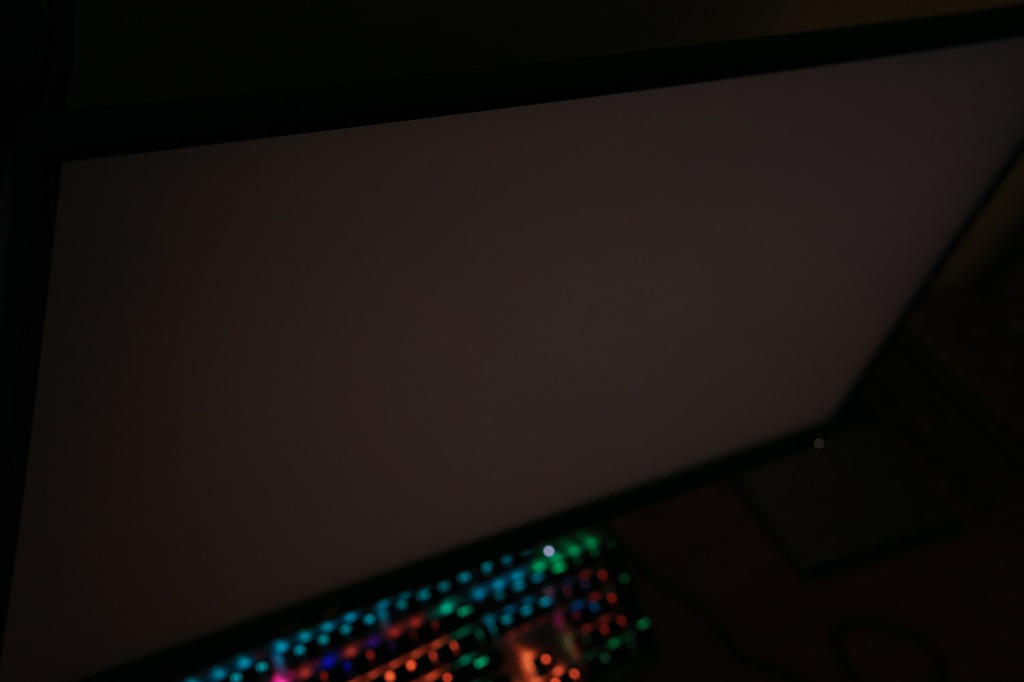
Glow at a 45/45 degree angle 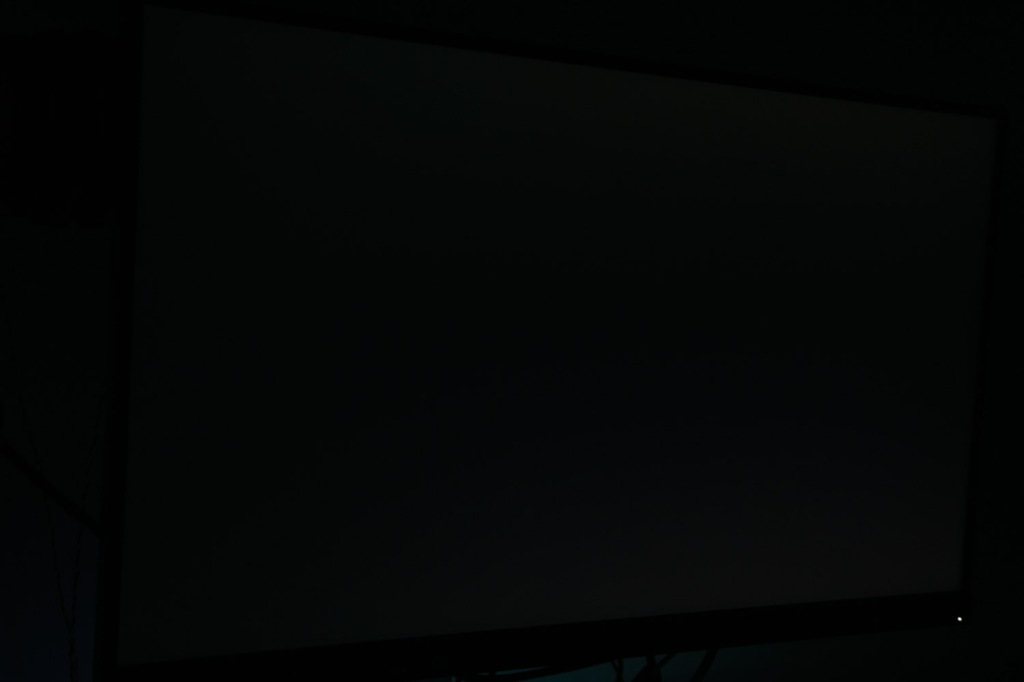
Glow at a 45 degree angle
Motion handling
This monitor supports up to 165Hz, interestingly LG didn’t include this setting in their own product. The monitor also support Freesync and G-Sync compatibility. Connecting it to my Nvidia GTX1080Ti enabled G-Sync automatically but there is one issue currently.
G-Sync issues
The monitor suffers from moments of having a black screen when framerates vary a lot. It looks like the display has issues when switching between LFC mode to regular mode and from regular to 165+ Hz. First time I noticed this I was in a game of CS:GO and while opening the buy menu, the screen went black. This to about three seconds and then it returned. For more investigation I ran Battlefield 5 at 200% resolution sclale and max details which resulted in a 30-50fps range. While playing I noticed several moments where the monitor when black and even mentioning “Cable not inserted”. When the display then went into standby it got connected again and everything resumed as normal until the next time. I’m not sure whether Lenovo is responsible or NVIDIA has a driver issue currently. My unit is running firmware LG1.1.
To my understanding, most/all of the people with this issue are running a 10-series NVIDIA gpu so AMD and 16/20-series owners might have no issues.
Turning off G-Sync also fixes the problem but will of course introduce tearing.
Motion clarity
So does 165Hz on this display have any benefit compared to 144Hz? I do not have the equipment to measure response times but this website does and they have measured the average response time to be 5ms, down from 6.02ms on the 27GL850. For a 165Hz mode to have any benefit, pixel response times have to be 6.06ms or below so being able to push the average response time down should help here.
The display has three modes of overdrive Off, Normal and Extreme. Interestingly, the extreme mode doesn’t look too bad when running at 165fps but this quickly changes when the framerate lowers as much inverse ghosting appears.
In order to compare how different modes compare I’ve takes several photo’s. They were taken at 1/60th for 144Hz and 165Hz and 1/30th for 60Hz. Several pictures were taken while panning the camera in sync with the ufo’s and the best ones were picked for comparison.
165Hz

165Hz Normal 
165Hz Extreme
First let’s take a look at 165Hz, the image remains sharp and as you can see setting overdrive to Extreme adds some additional clarity but also introduces some inverse ghosting. This is pretty minimal though so playing a game 165fps or more is definitely possible with this setting set to extreme although artifacts will be visible.
144Hz

144Hz Normal 
144Hz Extreme
Switching over to 144Hz, the image remains very sharp in motion but having overdrive set to Extreme introduces a lot more inverse ghosting to the point where I would consider this unusable.
60Hz

60Hz Normal 
60Hz Extreme
Dropping all the way down to 60Hz will of course introduce quite a lot of blur. These picture were taken at 1/30th of a second instead of 1/60th as to keep the shutter speed roughly half of the refresh rate. With overdrive set to Normal the image remains quite stable and no overshoot is visible. Setting overdrive to Extreme is completely unusable at this refresh rate though.
Response times compared to 27GL83A-B

Lenovo Y27Q-20 
LG 27GL83A-B
When looking at a side-by-side comparison between it’s noticable that Lenovo’s further tweaks to overdrive has indeed resulted in a slightly clearer image in motion. The black lines on the ufo have slightly more contrast which is also true for the complete image. This is also noticable when comparing both in person even though both displays are already excellent in this regard.
Conclusion
Lenovo’s LEGION Y27Q-20 is a very capable monitor, I feel they have improved over the 27GL850 and 27GL83A by improving motion handling as well as a nicer stand. Color performance is excellent in both wide-gamut (after calibration) and sRGB applications. The current issues with NVIDIA’s G-Sync compatibility are a concern though and I hope Lenovo or NVIDIA will be able to provide a fix in the near future. It would also be great if the monitor would come with some form of gamma controls since stock settings are not ideal.
| Pros | Cons |
|---|---|
| • 165Hz is a nice bonus over LG. • Slight improvement in motion clarity because of this and better tuning. • Great all-metal stand. • sRGB mode is very accurate. • Excellent performance after calibration. • Integrated 3-port-USB hub. • 3.5mm headphone jack with mic input | • G-Sync issues on 10-series NVIDIA. • $50 more expensive than 27GL850. • Out of box gamma results not great. • OSD not showing under 100Hz. • Cable management difficult due to low connection points. |
I do this stuff for my own enjoyment but if you are feeling generous you can buy me a cup of coffee.
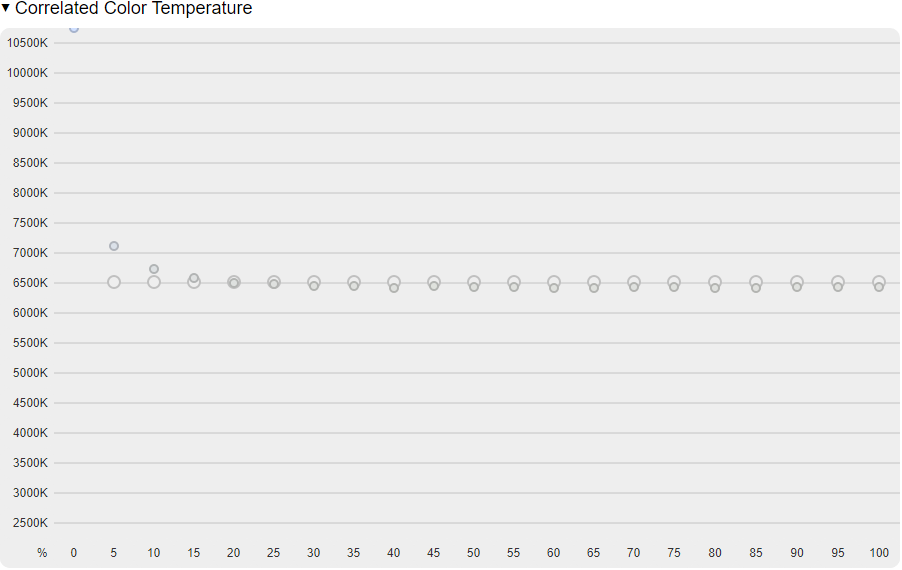
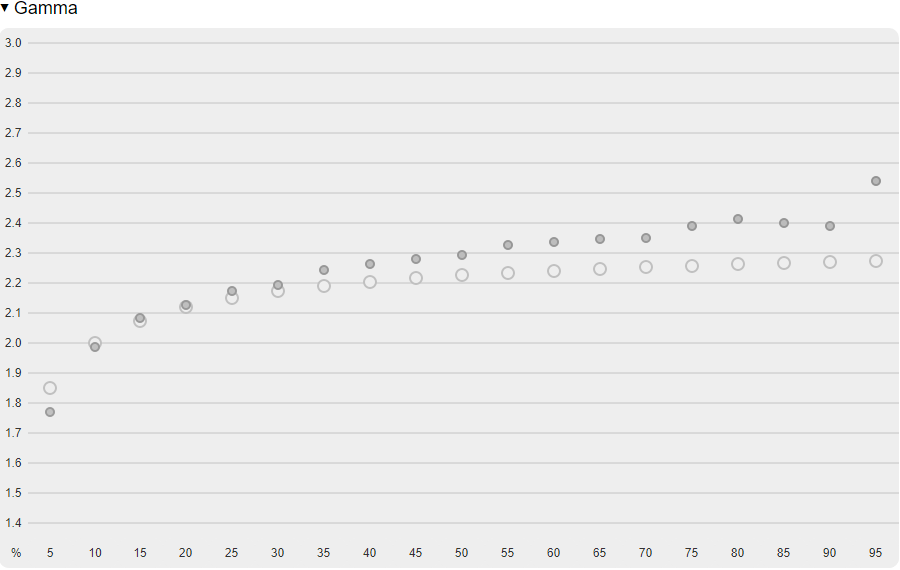
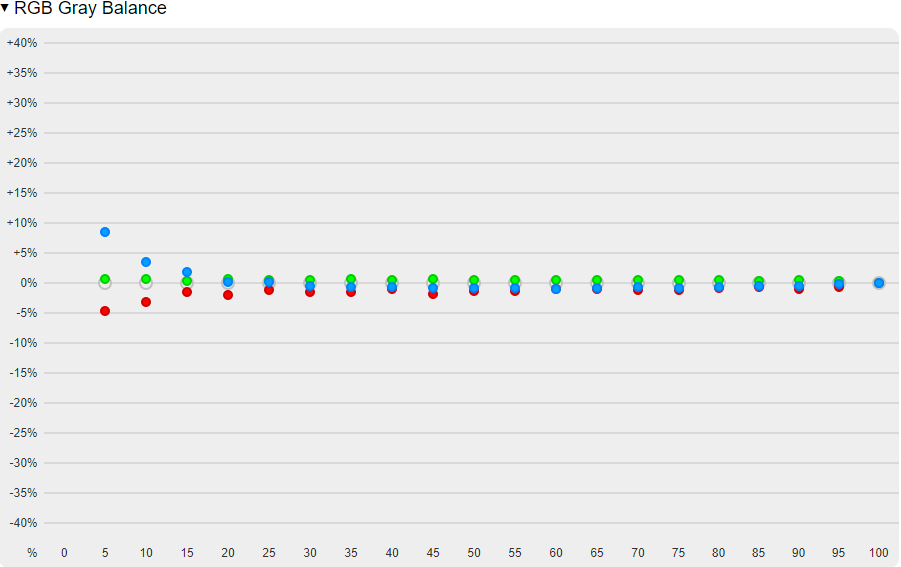
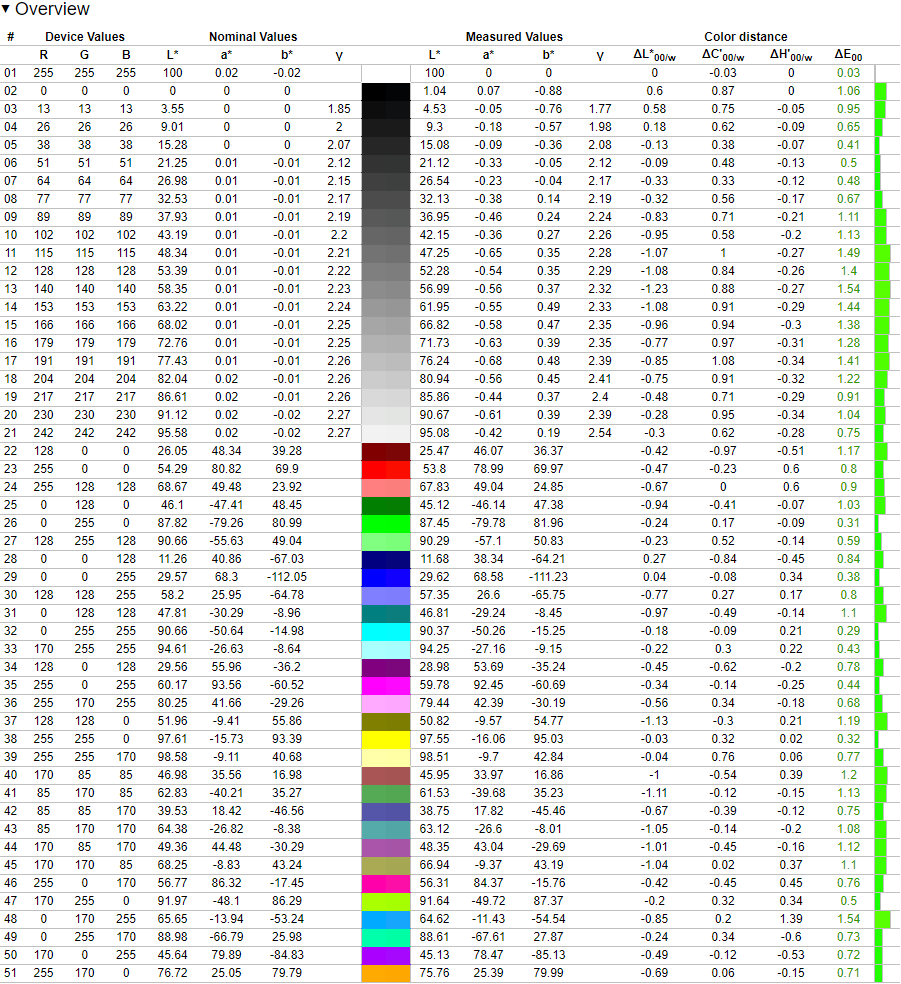
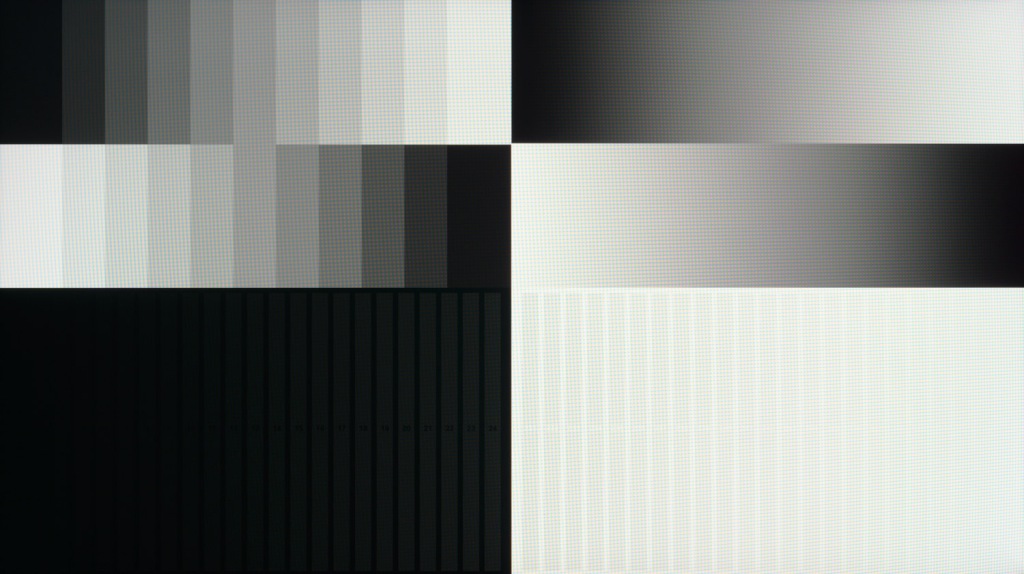
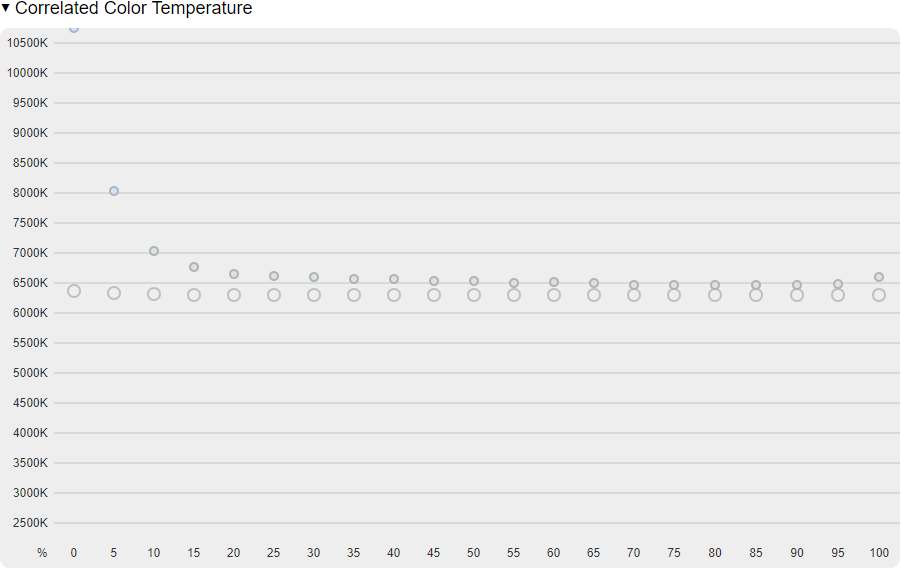
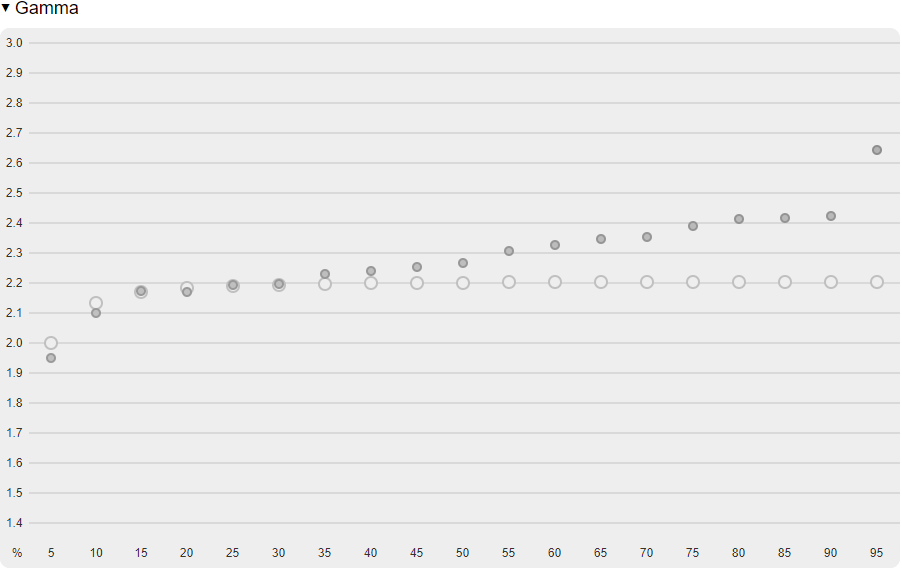
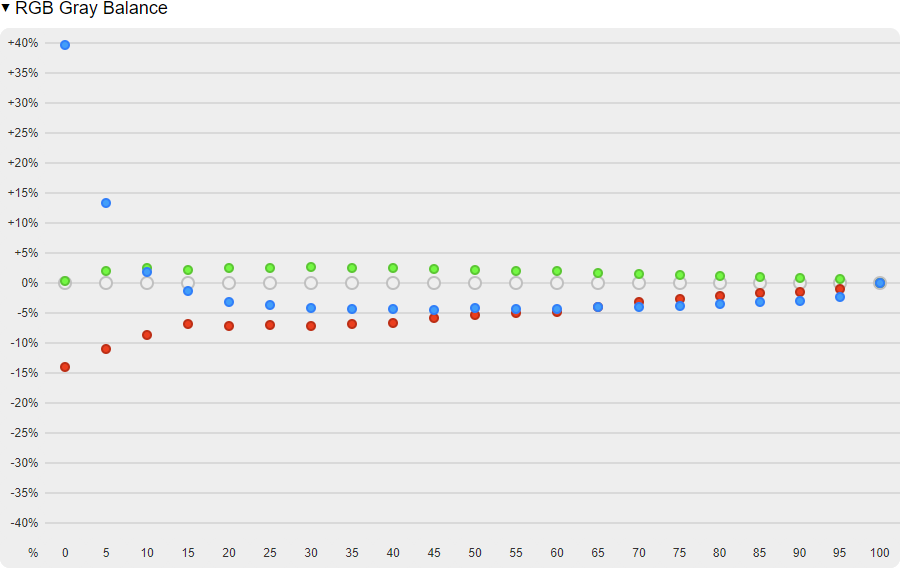
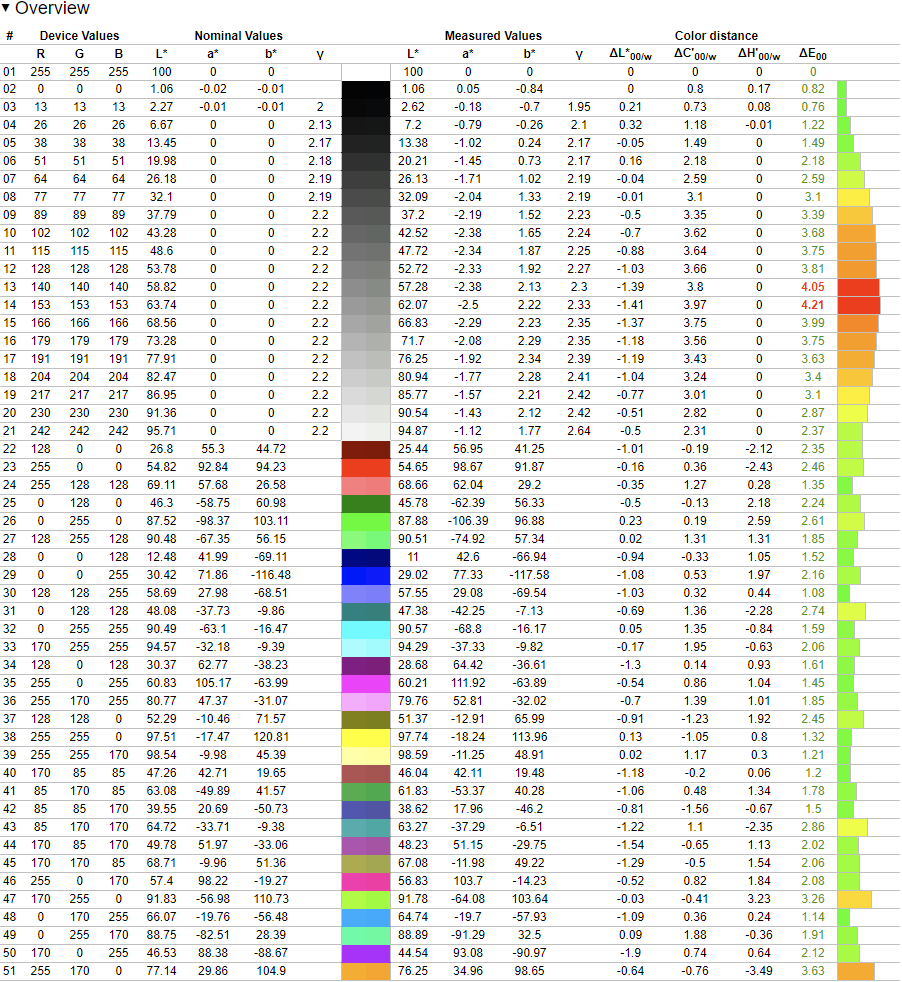
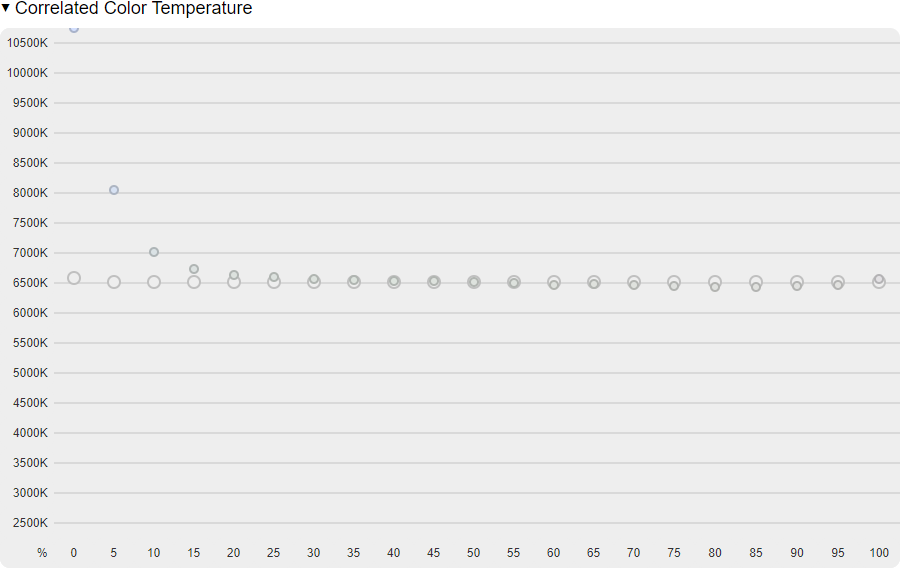
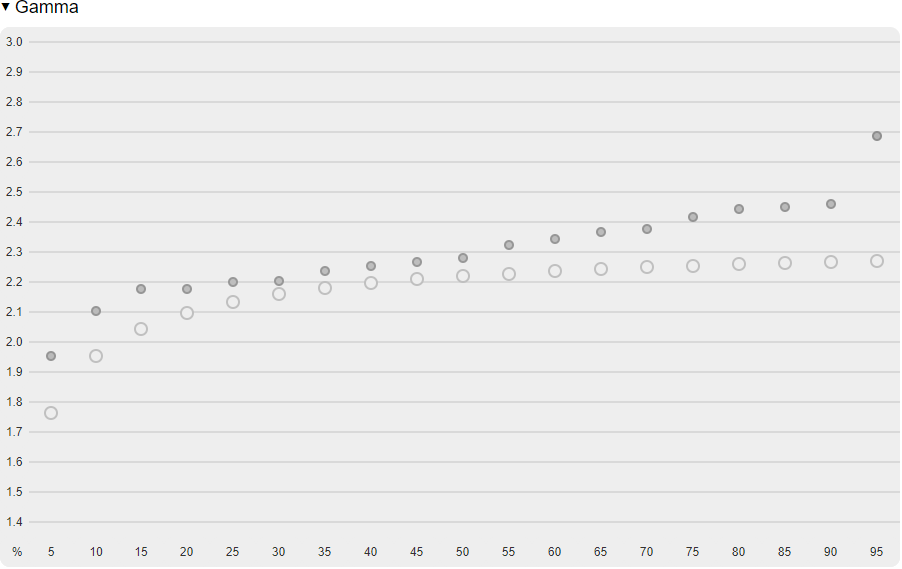
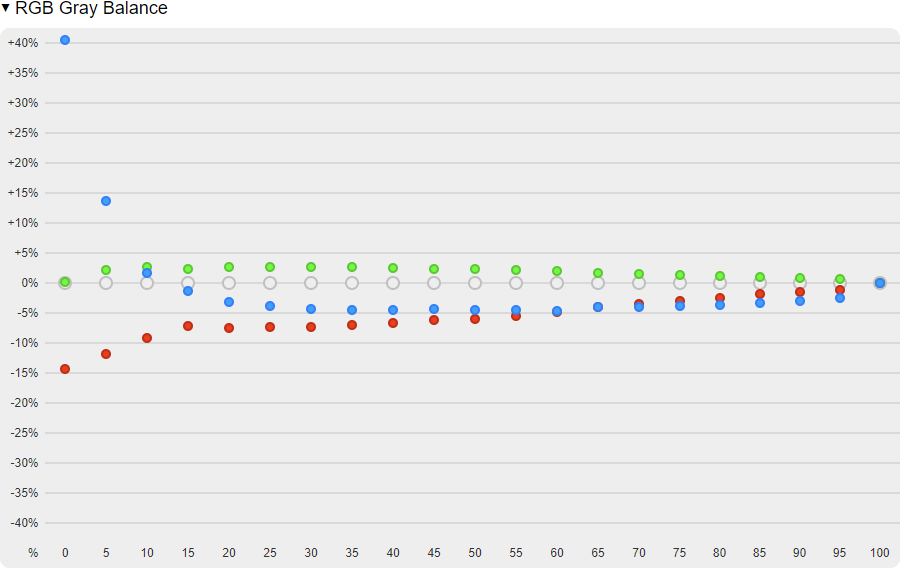
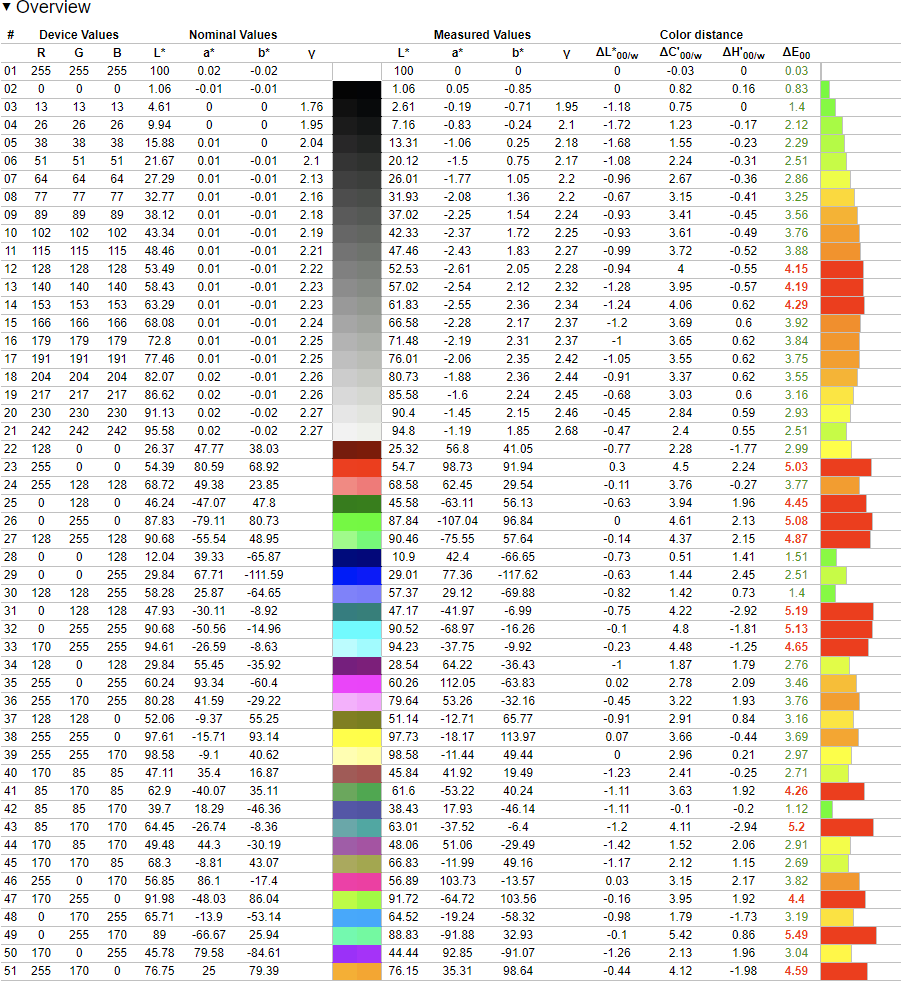
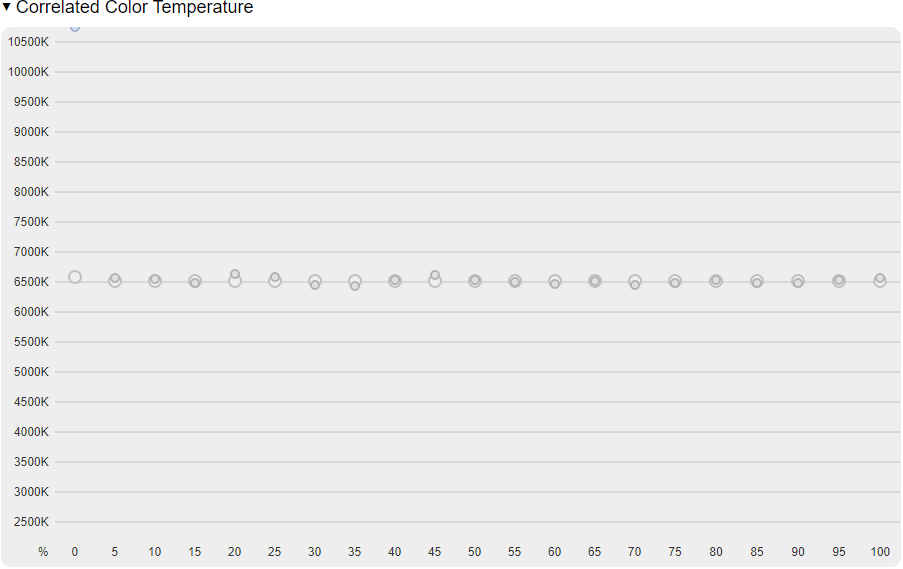
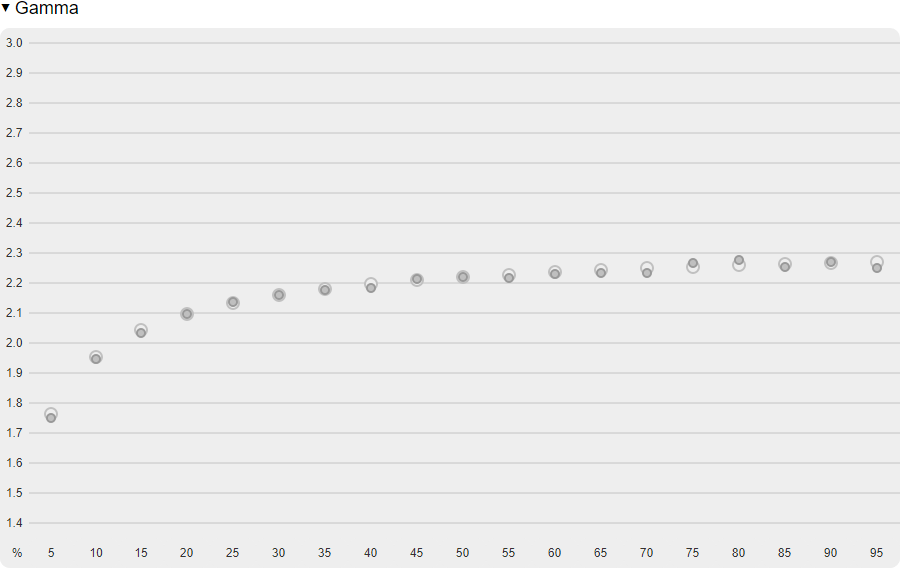
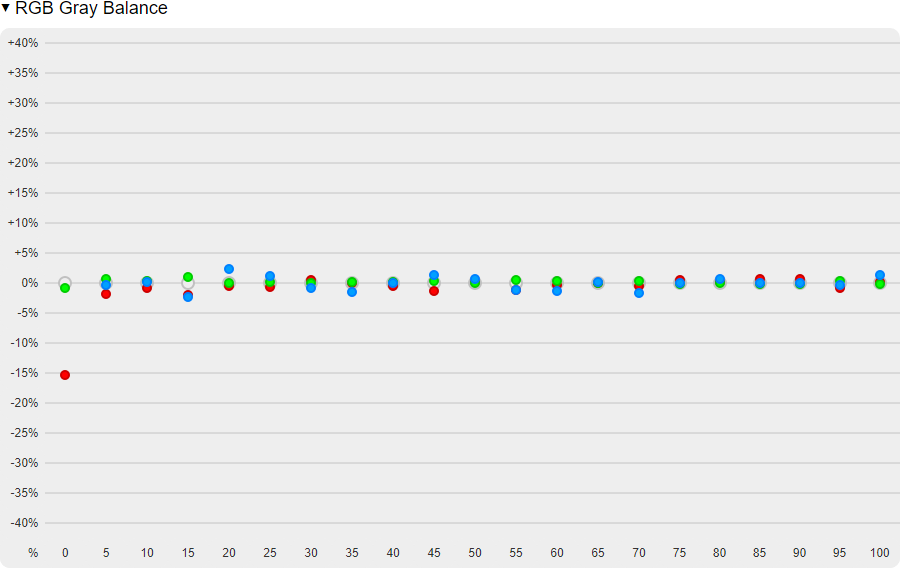
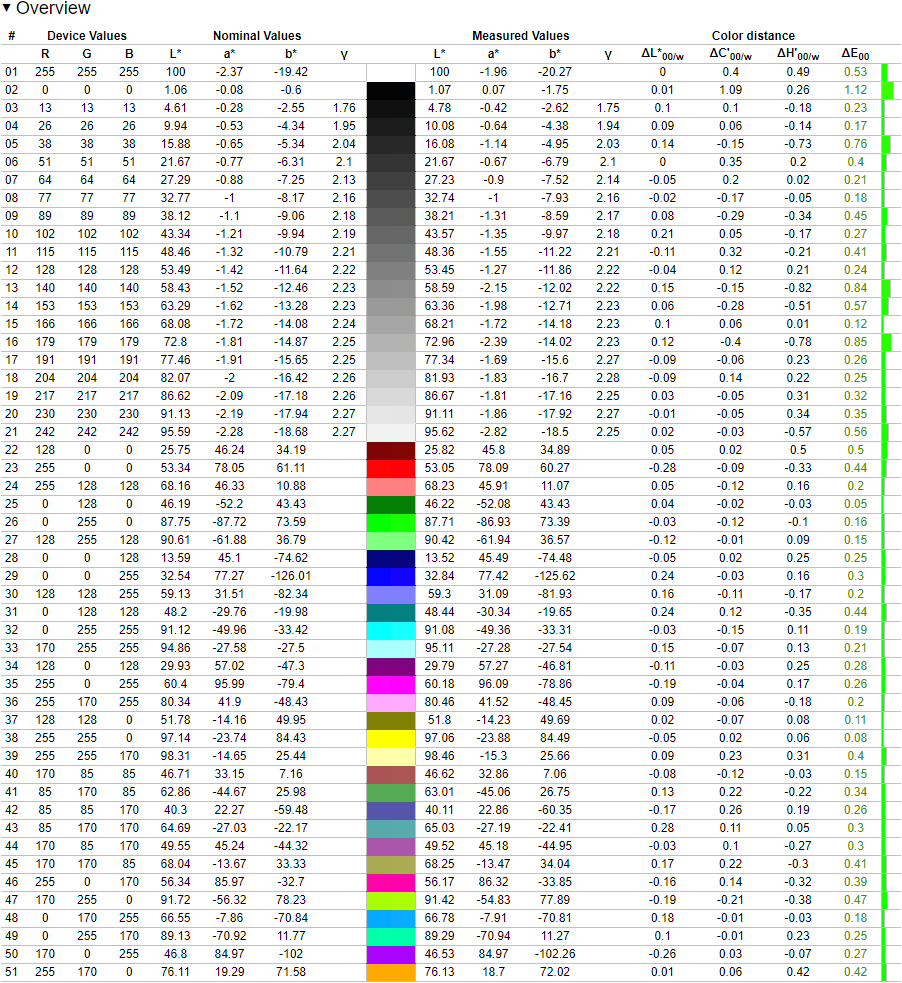
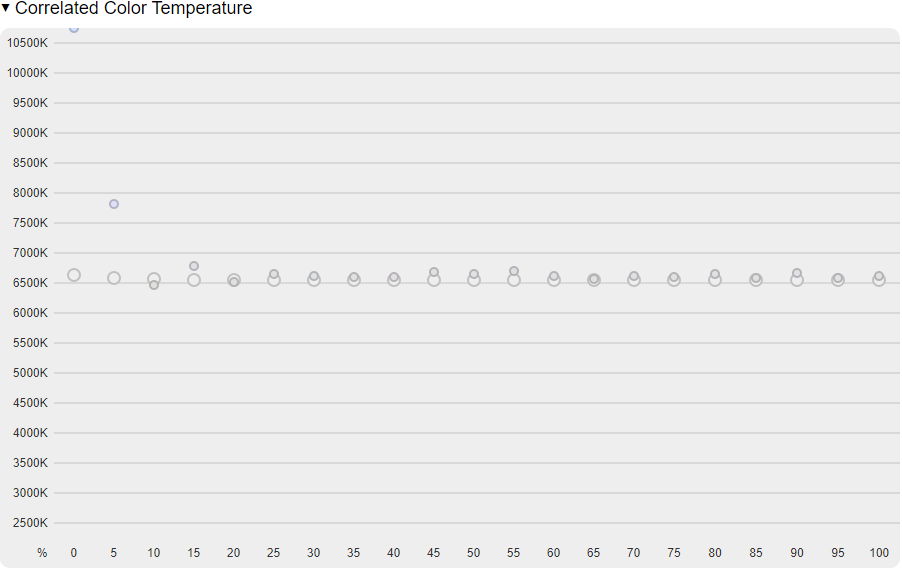
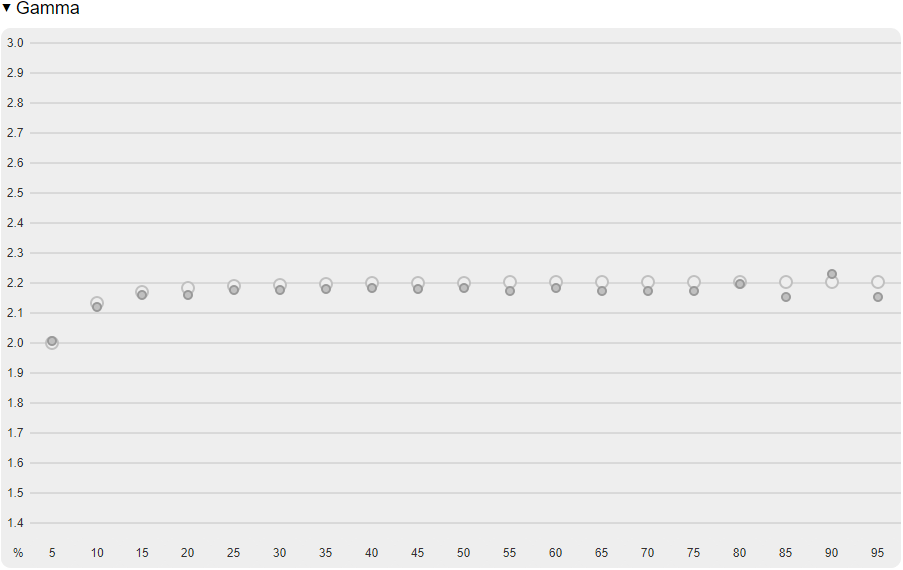
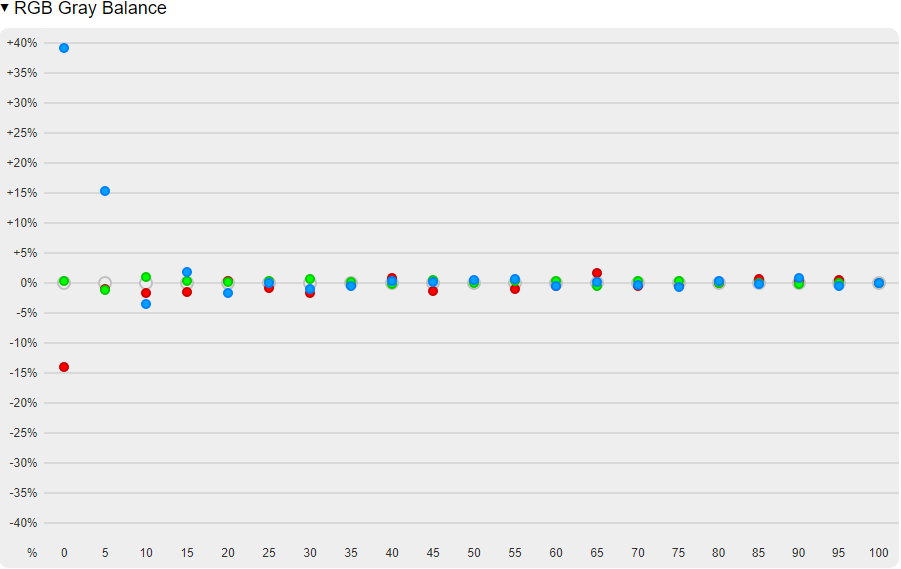
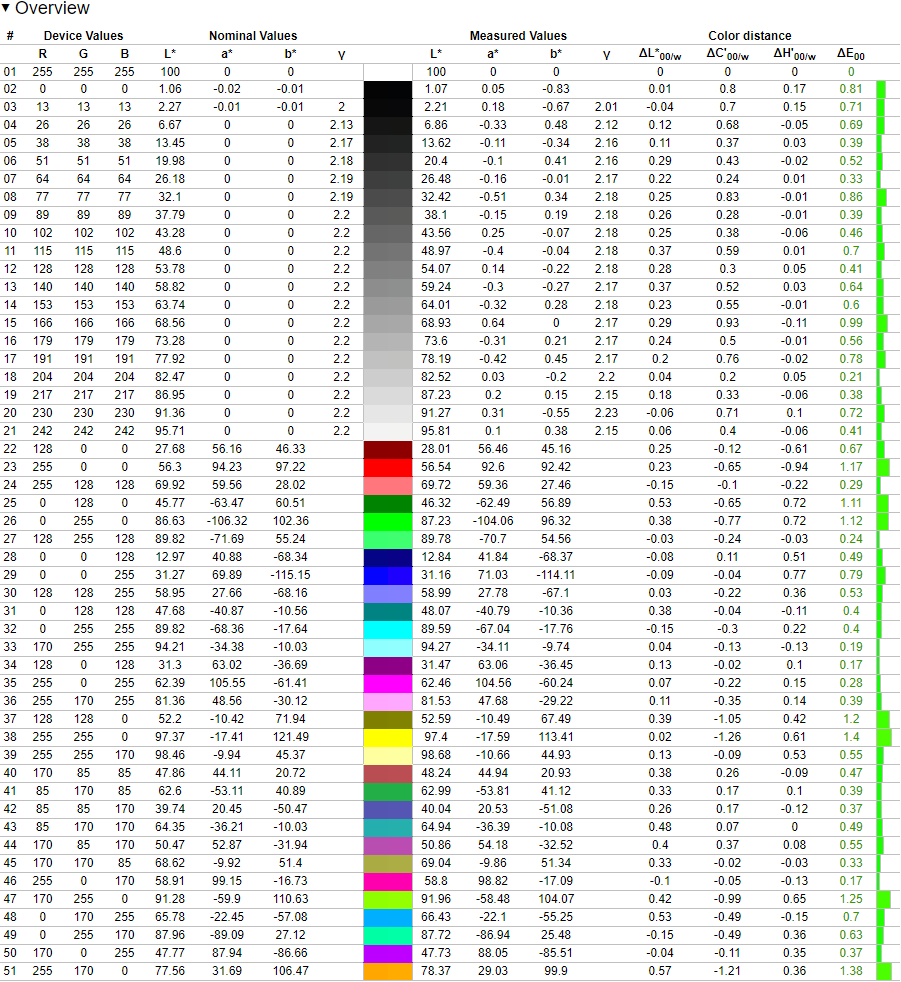
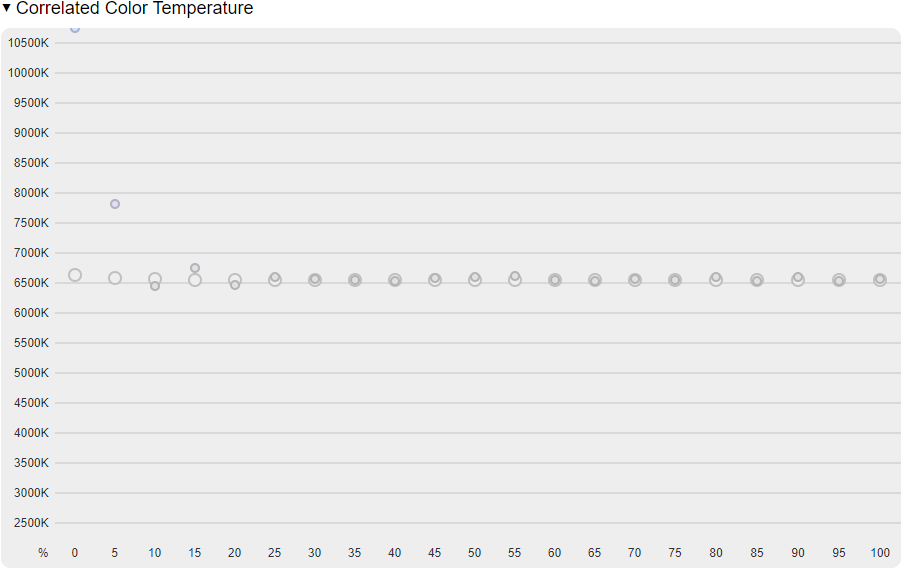
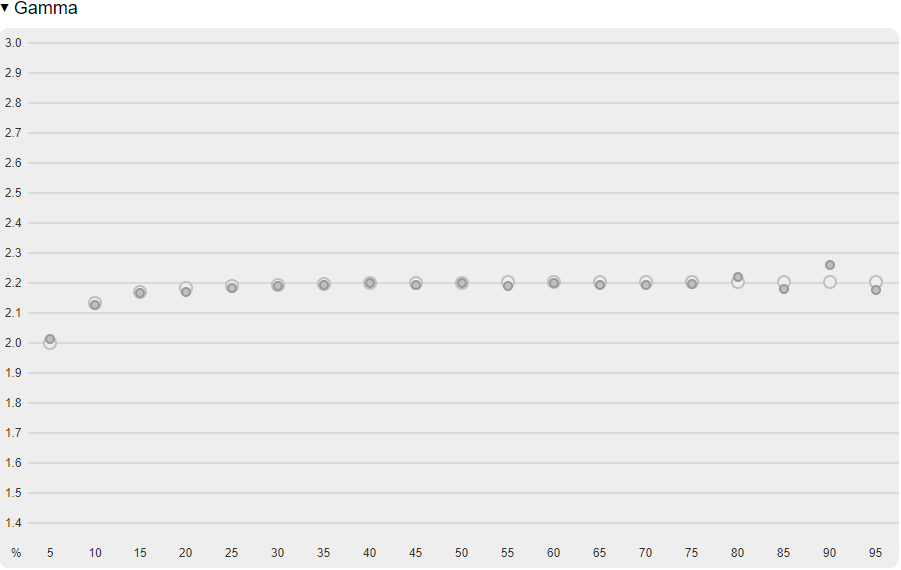
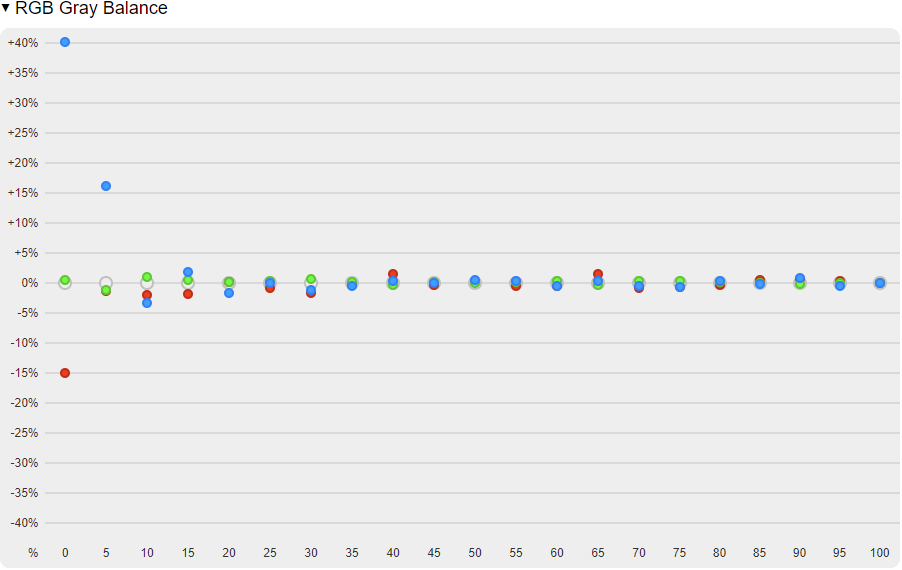
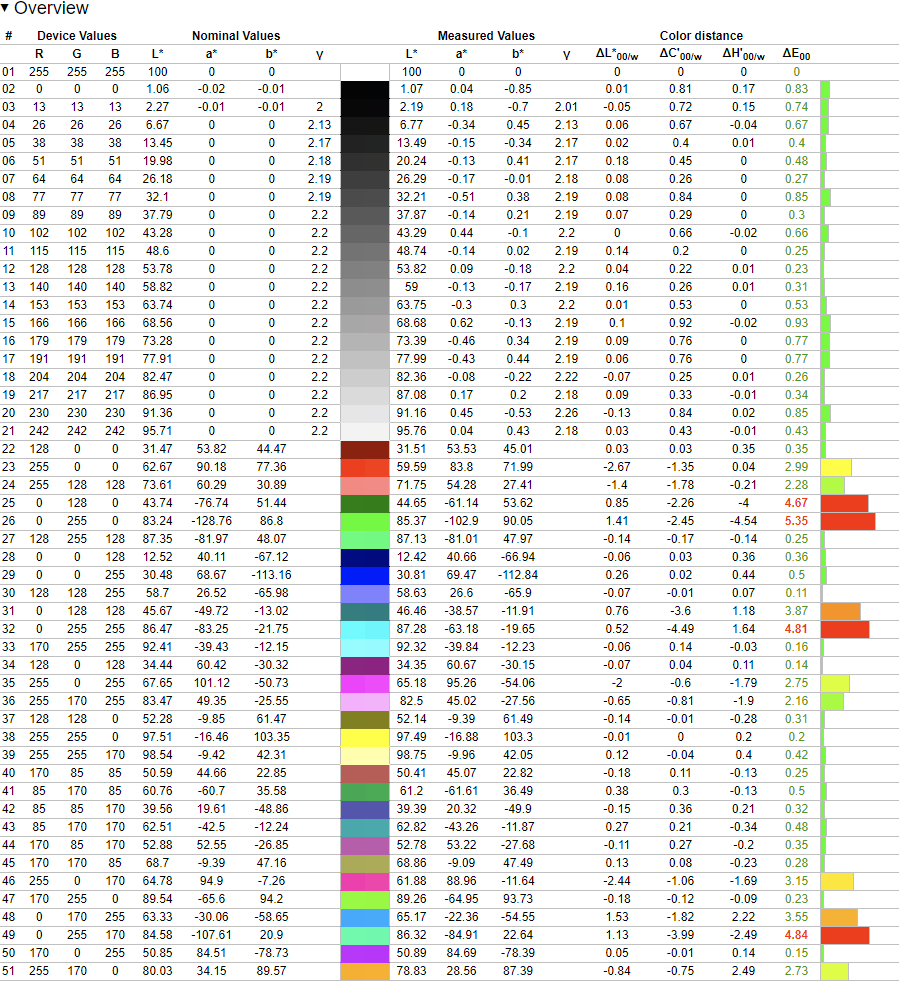
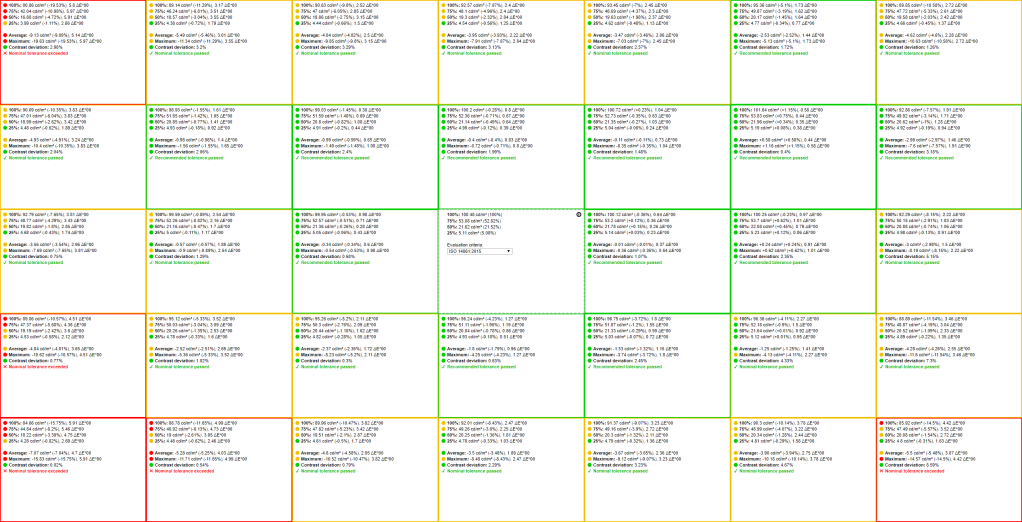





Hi,
Great review! One question though, would it be possible to upload the color profile after you calibrated the screen?
LikeLike
Thank you, I have added color profiles to the review. Just hit ctrl-f and search for “Color profiles”.
LikeLike
I also wanted to add that due to this review I went ahead and purchased this monitor! Thanks a bunch again!
LikeLike
Great, I hope it lives up to your expectations!
LikeLike
Hello,
How did you make a profile in sRGB mode enabled ? did you set “Whitepoint” and “White level” as measured in DisplayCAL ?
LikeLike
Does the Lenovo Y27Q-20 monitor have a crosshair feature like the LG 27GL850-B and ViewSonic XG270QG monitors? On the official website of Lenovo it is classified as a “Gaming” monitor but I’m not sure if it has the feature. https://www.lenovo.com/us/en/accessories-and-monitors/monitors/gaming/Y27q-20A19270QY2-27inch-Monitor-HDMI/p/65EEGAC1US
LikeLike
I do not think the monitor has a crosshair function.
LikeLike
Thank you for this review. It’s fantastic. I bought the monitor on the back of your review and I love it. My panel does have some backlight bleed in the bottom corners that is visible in dark scenes but I’m most likely just going to live with it. It’s otherwise fantastic.
LikeLike
That’s great to hear, as long as the bleed/glow is minimal I wouldn’t bother. It’s a trait of IPS displays anyway and will probably never be fully eliminated.
LikeLike
Simply install DisplayCal, ignore ArgyllCMS installation and > go to file, load settings and import the zip files. <
this part is not clear because it wont let me to select that folder or load the 7z.
PS. sRGB is not very good color but better at white and black so use the user as color temp then use RGB as 100/100/100 or 100/97/100 which looks much better.
LikeLiked by 1 person
I’m also unable to open the Zip file using DisplayCAL. Extracting the 7z files results in a ton of files.
LikeLike
I’ve updated my post, apparently this method is not working anymore. Just unpack the 7z archive and then import the .icm profile from the folder with the same steps as before.
LikeLike
Thanks @Moederbeer! That did the trick for me. This review made me decide to buy this monitor and I picked this up for $400 on sale at Best Buy. It has been great so far. My only regret is not getting another!
P.s. if anyone has issues with DisplayCAL causing flicker when set to manage colors over the OS at installation, I found that I had a conflicting software trying to do the same (TrueColor on MSI Dragon Center) and uninstalling the conflicting software resolved the issue.
LikeLike
Hey! does this monitor have an external power block or just a normal direct power cable. I hate external power blocks for monitors. Also how are the connections oriented? downwards or straight out? And are the OSD buttons actual buttons or are they touch?
LikeLike
Hello there, sorry for my delayed reply. It uses an external power brick, all connections are oriented downwards except for the side usb ports and audio jack. OSD buttons are clicky switches, no touch.
LikeLike
Nice! Thanks for the reply
LikeLike
Very nice review. Got the monitor myself today coming from a VA panel. Red seems to pop a bit too much and i toned in down via windows color calibration, and toned down the saturation option to 48 in the OSD. Is this the best way? Or should i activate sRGB? overall picture looks a bit dull when i do that.
LikeLike
If you think saturation is too much I’d try sRGB mode first and the OSD settings for red saturation. I wouldn’t use driver settings, only for color profiles.
LikeLike
Hello are you sure this monitor supports Displayport 1.4 andHDMI 2.0 ? Because on their site they say DP 1.2 and HDMI 1.4
Click to access Lenovo_Legion_Y27q-20_single_model_202003161408.pdf
LikeLike
Pretty sure, I think their site has wrong information. I can’t test HDMI 2.0 at the moment but there is a DP1.4 toggle in the OSD.
LikeLike
You should also do input lag tests. This is so close to being on par with the bigger monitor review sites. Great work though!
LikeLike
Thank you for your kind words, I would love to test input lag but I don’t have the equipment for this.
LikeLike
Hi, is the G-sync issue has been fixed? i am looking forward to buy this screen.
LikeLike
I don’t think anything has changed yet my fix still works flawless.
LikeLike
Thanks pal much appreciated
LikeLike
You’re welcome!
LikeLike
I saw it has HDR. Do you know how to turn on HDR for this monitor? Or DCI-P3.
LikeLike
You can turn on HDR in Windows’ display settings, it’s under HD color. DCI-P3 is not a setting, it simply displays DCI-P3 in it’s unclamped gamut. Having a DCI-P3 calibrated color profile will help with accuracy.
LikeLike
Thanks for the very detailed review. One question though: I have a R9 390 but I’m only able to set the monitor to 120hz (via Windows Advanced Display Settings). However whatever I’ve tried I can’t get it to anything higher. Funny enough Windows shows the recommended resolution as 3840 x 2160. I’m using the DP cable that came with the monitor.
Thanks in advance for any help!
LikeLike
Maybe as additional information: I can get it to 144hz with AMD custom soultion. But if I do that, I can only use 8 bit colour depth. My feeling is, that the R9 390 isn’t able to run the monitor with 1440p, 144+hz and 10bit, because it’s too old.
LikeLike
Yes I think so too, probably an older displayport version with less bandwidth.
LikeLike
Hi, thanks a lot for this review. Would you mind sharing your calibrated settings? Contrast, brightness, RGB values and etc. I dont have the tool kit.
LikeLike
So with your colour profiles, do you still keep sRGB enabled from the monitor settings after you apply the profile or was the profile meant to substitute for the sRGB mode in that we can just keep it on default settings (sRGB off)
LikeLike
With sRGB mode enabled.
LikeLike
Were you ever able to resolve the G-Sync issues with the 10x series cards? I heard rumors on reddit about a firmware being released if you reach out to support. Thanks!
LikeLike
I have another post on my blog about the issues and a fix.
LikeLike
I still get black screens at 165 Hz using a GTX 1080 and this fix. I also can’t select 10 bpc when the refresh rate is over 120 Hz. Once in a while the monitor randomly switches to 10 bpc at e.g. 144 Hz. This causes a periodic black screen and colorful lines start constantly appearing.
Sometimes the 165 Hz option just disappears completely from Nvidia Control Panel. Overall, seems like a pretty “buggy” monitor full of issues to me…
LikeLike
You’re the first I’ve heard talking about so many issues. Maybe there is something wrong with your unit or you’re using a faulty cable. Make sure you use displayport when available.
LikeLike
For the exact same price
4990SEK
RX 5700XT.
Would you choose the
LG 27GL83A-B
or
Lenovo Legion Y27Q-20
If you could only have one and had to return the other one.
Thanks in advance!
LikeLike
Lenovo is a better monitor overall unless you don’t like wide gamut displays. USB hub/mic input/165Hz/wide gamut/better construction.
LikeLike
Hey! I really love your post, and it has helped me tremendously in picking out my current monitor!
So anyway, just a quick question. I recently got the ColorMunki DIsplay to tweak my y27q-20 with DisplayCAL for print accuracy. I followed the steps you took in this post, but I was wondering do i need to have the monitor’s sRGB function turned on before the calibration? or should I just be off?
LikeLike
You should have the monitor in the mode you’d wish to create a profile for. I calibrated mine in wide gamut mode. After calibration, if an application supports color profiles then it should display sRGB content properly, even when you have your monitor in wide gamut mode.
LikeLike
“Simply install DisplayCal, ignore ArgyllCMS installation and > go to file, load settings and import the zip files. <
this part is not clear because it wont let me to select that folder or load the 7z."
Having the same problem
LikeLike
I’ve updated my post, apparently this method is not working anymore. Just unpack the 7z archive and then import the .icm profile from the folder with the same steps as before.
LikeLike
@OP
Thank you for such a concise review with real expectations of the product. Visiting Reddit’s endless speculation and subjective discussions, Google’s SEO ranked sites like The Verge and other news sites make it impossible to actually understand a high-priced product without seeing it in store. I’m looking forward to reading more!
LikeLike
Hello!
Let me first thank you for posting this review/guide to this monitor, it swayed me to getting it over the HP Omen version of this panel.
Question: Regarding audio and the 3.5 mm jack in the monitor, you had mentioned that the quality is good and does provide some perks. I am trying to understand the pros and cons of plugging in audio directly to the PC vs the Monitor, is one better than the other? Does the monitor simply bypass the audio quality over from the PC through displayport 1.4?
Also, do the gaming presets provide any advantage other than brightness and having extreme overdrive by defaullt?
Thanks!
LikeLike
I use the 3.5mm jack as a microphone input and it does better than the one on my motherboard, I can’t say that is the same for everyu setup though so you should experiment yourself. I don’t think the preset do anything else besides what you’ve mentioned.
LikeLike
Thanks for the great review!
LikeLike
You’re welcome, that’s great to hear!
LikeLike
I just received this monitor, and I’m quite impressed apart from one dead pixel. I’m wondering if the audio jack at the back is just a plug and play kind of thing? Coz I can’t seem to get the mic to work. I can hear stuff when I watch videos, but I can’t get the mic to work.
LikeLike
In order to use it as a mic input you need either a TRRS to TRS splitter or use a headset with a TRRS jack. Plugging in a mic directly will not work since it expects an output device by default.
LikeLike
I’m on my third one. Absolute horrible IPS glow on all of them. There is a big white hue from bottom left corner (enough to be noticeable in netflix/youtube/dark-ish games like hearthstone). In the bottom right corner there is a brownish hue just as big which gives all colors a rather distorted look). I see reviews written about the monitor and they have no big issues with the monitor. However many other major forums are absolutely having issues.
I have brightness set to 20. The glow is so horrible that the white and brown hue meets in the middle. The other 2 screens where just as bad with one having viable bleed in the middle top border extending down to the middle of the screen.
Is your screen store bought or given as review example? Am I just so unluck or what gives?
LikeLike
I’m sorry you have such bad experiences. I’ve purchased many IPS display and while all had IPS glow, I’ve only had one which was unacceptable. I’ve bought my example in a store.
LikeLike
Thank you for this review! Because of you, I felt confident buying this monitor! I even saved €80 compared to the LG 27GL83A-B.
But maybe you can help with a “problem” since I was not lucky on Reddit.
So, I’ve received my monitor and the first thing I noticed was that it was set to 60 Hz. I went to the display advanced settings and noticed that I can’t select more than 100Hz. 😦
The firmware version is LG1.1 and I’m using the Display Port cable that came with the monitor and I’m connected to a Lenovo docking station that supports DP 1.4. See link below:
https://www.lenovo.com/us/en/accessories-and-monitors/docking/universal-cable-docks-thunderbolt/thunderbolt-dock-gen-2-us/p/40AN0135US
But to be honest, I think my “problem” is the laptop that I’m using. I’m using the work’s laptop for home office and this laptop only has an integrated Intel UHD Graphics 620. My suspicion is that this gpu can’t handle the refresh rate.
I also read the same here:
https://www.howtogeek.com/267650/how-to-make-your-120hz-or-144hz-monitor-use-its-advertised-refresh-rate/
>> Lots of other issues could cause your monitor to not function at its advertised refresh rate: Your computer’s GPU isn’t good enough. Integrated graphics or older discrete graphics might not support your monitor’s refresh rate. Be sure your graphics card supports the monitor’s resolution and refresh rate.
But I’m not expert on this and I would like some confirmation. I bought this monitor because I’ll do my first gaming pc build later this year. I have an older laptop from 2015 that has a Nvidia gpu, maybe I try on that one too.
LikeLike
I’m pretty sure it’s either the dock or your intergrated gpu which is causing your issue. If you’re not using the display for gaming then I wonder why you went for a “gaming” display with 165Hz.
LikeLike
I’ve found that it is really the problem of the docking station. I even found on a Lenovo forum some people complaining about the limitation, even though it has DP 1.4. Well, I’ve bought the monitor for my new pc build which I’ll be doing this year 😉 No, problem if I already use it for home office.
LikeLike
I bought this monitor based on your review and some positive Reddit comments. I’m liking it a lot so far and have applied your color profile for the wide gamut mode. A quick note on DisplayCAL though: you say to ignore the ArgyllCMS installation, but I was unable to choose and load the profile without it. No biggie, but thought it’s worth mentioning.
I actually uninstalled DisplayCAL because the profile gets loaded to Windows Color Management, and to be honest I couldn’t find any answers online on whether it’s permanently needed as a background service. However, to be quite honest I’m totally unfamiliar with monitor calibration so I’m a bit paranoid that uninstalling it will be detrimental to color accuracy (even if that’s completely irrational). The profile does seem to stick though as it’s still slightly less vibrant than before applying the profile (a good thing IMO), even having rebooted several times (and Windows Color Management still says it’s using the profile as its system default ICC profile).
Out of the box, sRGB mode seemed a lot more washed out than my Samsung S27H850Q (IPS/PLS). With your profile, the Lenovo is slightly more vibrant than my Samsung, but less vibrant than stock DCI-P3.
Thanks.
LikeLike
Glad you’re liking it so far. I recommend using DisplayCal’s loader since it will always restore your color profile. Running full screen applications like games can unload the profile even if Windows still says it’s there and the loader helps to restore that.
LikeLike
Hi,
What kinda settings would you recommend using? Monitor have many variables like Brightness, DCR (dynamic contrast), Saturation, Contrast, Color Temp, Dark Boost, sRGB and etc or does colour profiles change those settings automatically?
LikeLike
Default everything and change color temperature to fit a neutral white point. sRGB can be enable when you want to reduce the color gamut.
LikeLike
One of my friends has this monitor, and I’m looking to buy it, but he told me that he cannot turn off the freesync mode. In your review, you have mentioned that you turned off G-sync. How did you do that? My friend was trying to turn it off in the settings and I was helping him, but unfortunately we were not able to find an option to turn it off.
Thank you so much for the review.
LikeLike
By turning it off in the NVIDIA control panel.
LikeLike
Thank you so much.
LikeLike
Hey, really like the review! I’ve been weighing the y27q-20 against the HP Omen 27i and am still trying to pick one.
A lot of reviews say the the Lenovo has a whine issue when it doesn’t have a signal, and even when it is off. Have you noticed this at all? Said it’s a high pitched frequency 8k or 16k. Just trying to figure out if people are unlucky or if it’s a known issue.
LikeLike
Mine has a really high pitched sound as well when it’s in stand-by. It doesn’t bother me since I don’t sleep next to it.
LikeLike
Total monitor novice here, but I was looking into the LG Nano IPS panels, and stumbled across these complaints on a page regarding the Lenovo: https://www.rtings.com/monitor/discussions/OOn6ARMc40rp4JI_/fast-ips-display-with-problems
I realize it runs contradictory to many of the more sophisticated reviews, but I’ve also seen similar complaints regarding the Dell S2721DGF. So, I’d like to hear your thoughts on the merits of the linked complaints.
LikeLike
I’d be happy to answer some specific questions but I won’t post another mini review underneath my review just for you.
LikeLike
I was wondering if you could speak on whether the general complaints they expressed regarding the LG Nano IPS panels, like the Lenovo, had any validity to them or not in your experience, not to give me a point by point evaluation.
That said, since you’d prefer a more pointed question: Both respondents from the link I cited noted an “unhealthy/sickly” greenish tint, that persisted even after clamping to sRGB, which they claimed was troubling enough for them to return the Lenovo, whereas you noted only a slight green tint, with the Lenovo performing admirably when clamped overall. In your view, are they potentially exaggerating, or is this a real issue – perhaps one of variance(that seemingly affects no semi or full professional reviewers), for a prospective buyer to be concerned with?
LikeLike
Hi, thanks for sharing all this info.
When I enable sRGB mode, brightness is locked (so high imo) so I need to work with normal temperature mode (it allows me to change brightness, contrast and saturation, use 20, 85 and 50, respectively).
Here is my problem: some Windows colors are too vivid and weird (the blue when I select some files, the green when I copy a file, etc.).
I’ve installed both of your profiles with DisplayCAL but when I select one of them in “Screen Configuration > Color Profile” I can’t see any change. Am I missing something?
LikeLike
Does the Lenovo Y27q-20 support 1080p 120Hz ? Was thinking of getting this monitor because its on sale but I want a monitor that I can use for my PC and can do 120Hz for my PS5. I know some monitors do not have 120Hz timings and dont work for PS5’s performance mode.
LikeLike
Seems to work for me, just tried it.
LikeLike
Hi, sorry if this is an obvious question. I just want to check that for the color profiles you uploaded, we use the sRGB profile if the sRGB mode is checked on our monitor? And use the RGB profile if the sRGB mode is NOT checked on our monitor? Thanks for the review by the way 🙂 I’m enjoying this monitor
LikeLike
There should be an ” sRGB mode” profile which has the correct calibration when you have sRGB mode enable in the monitor. The other one is calibrated to the wide gamut mode but it has an sRGB gamma (brightness) contour.
LikeLike